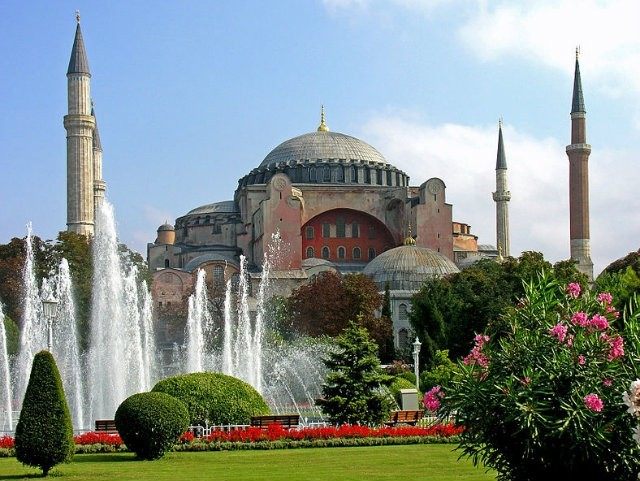The ancient cathedral of Hagia Sophia in Istanbul – the former seat of eastern Christianity – could be turned into a mosque in revenge for the Pope describing the murder of 1.5 million Armenians as a genocide.
“Frankly, I believe that the Pope’s remarks will only accelerate the process for Hagia Sophia to be reopened for [Muslim] worship,” Professor Hizli, a senior government cleric, said in a written statement on April 15th.
He decried the Pope’s comments as a “modern reflection of the crusader wars launched in these lands for centuries,” and suggested that Turkey’s role as a “standard bearer” for the Muslim world provoked such criticism from non-Muslims.
The Pope said the murder of 1.5 million Armenians, starting in 1915, was “the first genocide of the 20th century,” at a service to mark the centenary of the atrocity on Monday. His comments sparked outrage in Turkey and the government summoned the Vatican’s ambassador to complain.
Most Armenians adhere to the Armenian Apostolic Church, the world’s oldest national church, and have long been a persecuted minority in Turkic lands. Millions who weren’t killed were driven from their homeland.
HISTORY OF THE HAGIA SOPHIA
Istanbul, and the Cathedral, sits on a civilisational and continental fault line – precisely where Asia meets Europe.
The city was the centre of the Greek world after Athens, the capital of the Byzantine Empire (the eastern half of the Roman empire after it split) and then the capital of the Ottoman Caliphate, and the centre of the Islamic world, for over 500 years.
360 – Became a Christian site of Worship
A church on the site that the Hagia Sophia now stands was first dedicated as a Byzantine Orthodox basilica in the year 360.
The current building was erected in 532, and was the world’s largest cathedral for over 2,000 years. Designed by Greek mathematicians, the famous dome shape is held up as the archetype of Byzantine architecture – which has been widely imitated in Islamic architecture.
1453 – Conversion to a Mosque
The Muslim Ottomans overran Constantinople on the 29th of May 1453; the city was renamed and the Hagia Sophia converted into a mosque. The bells, altar and iconostasis were removed and mosaics depicting Jesus, Mary, Christian saints and angels were plastered over – the minbar and four minarets were added.
1935 – Secular Museum
In 1931 the Hagia Sophia was closed to the public for four years and reopened by the authorities of Turkey’s young Republic as a museum in 1935. Carpets covering marble floors and plaster covering mosaics were removed, revealing Christian art for the first time in centuries.
The secular move was part of President Atatürk’s modernisation of Turkey, which included the adoption of a western alphabet.
2002 – 2015 – Islamist Pressure
Turkey’s Islamist Justice and Development Party gained power 2002, and the Hagia Sophia’s status as a secular space has looked perilous ever since. Calls to covert it back to a mosque have increased in the past couple of years, with regular demonstrations held outside.
In November 2013, Deputy Prime Minister Bülent Arınç expressed his hope of seeing the Hagia Sophia used as a mosque again and called it the “Hagia Sophia Mosque” when speaking to reporters.
On April 10th of this year, a Muslim cleric recited the Quran in the Hagia Sophia for the first time in 85 years to mark the opening of a new exhibition, “Love of the Prophet.”
The historic Istanbul cathedral and museum, Hagia Sophia, witnessed its first Qur’an recitation after 85 years. pic.twitter.com/alAcYKKvQK
— Julie Lenarz (@MsIntervention) April 11, 2015

COMMENTS
Please let us know if you're having issues with commenting.